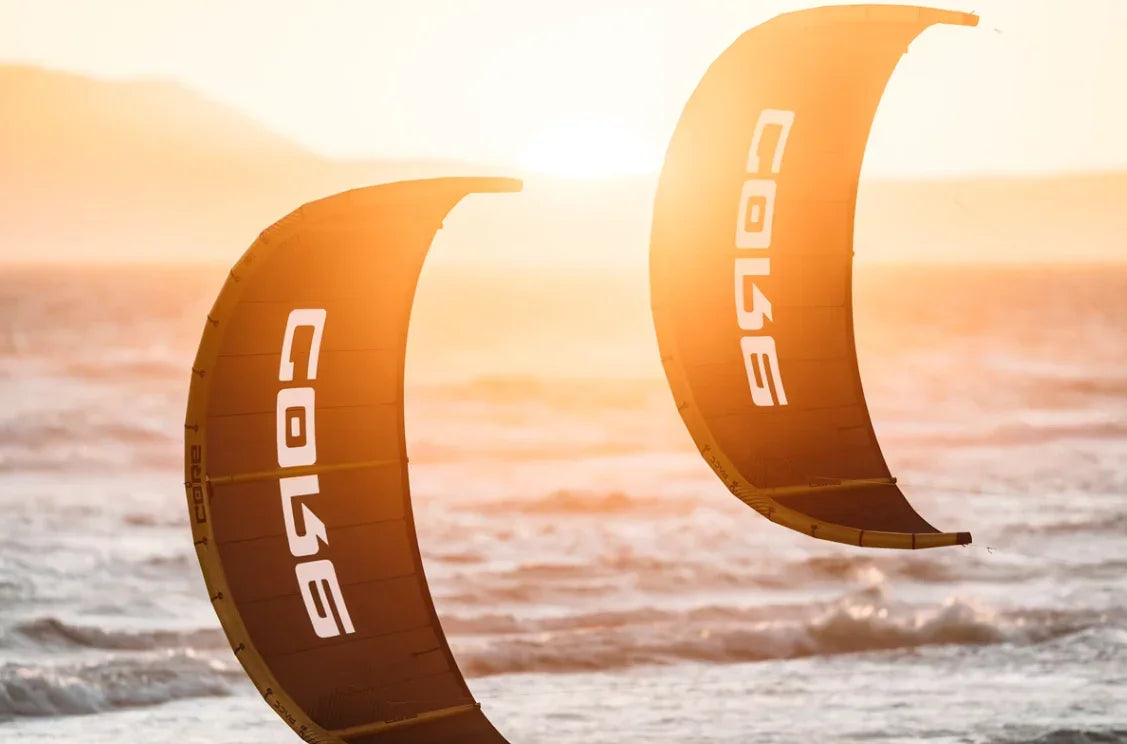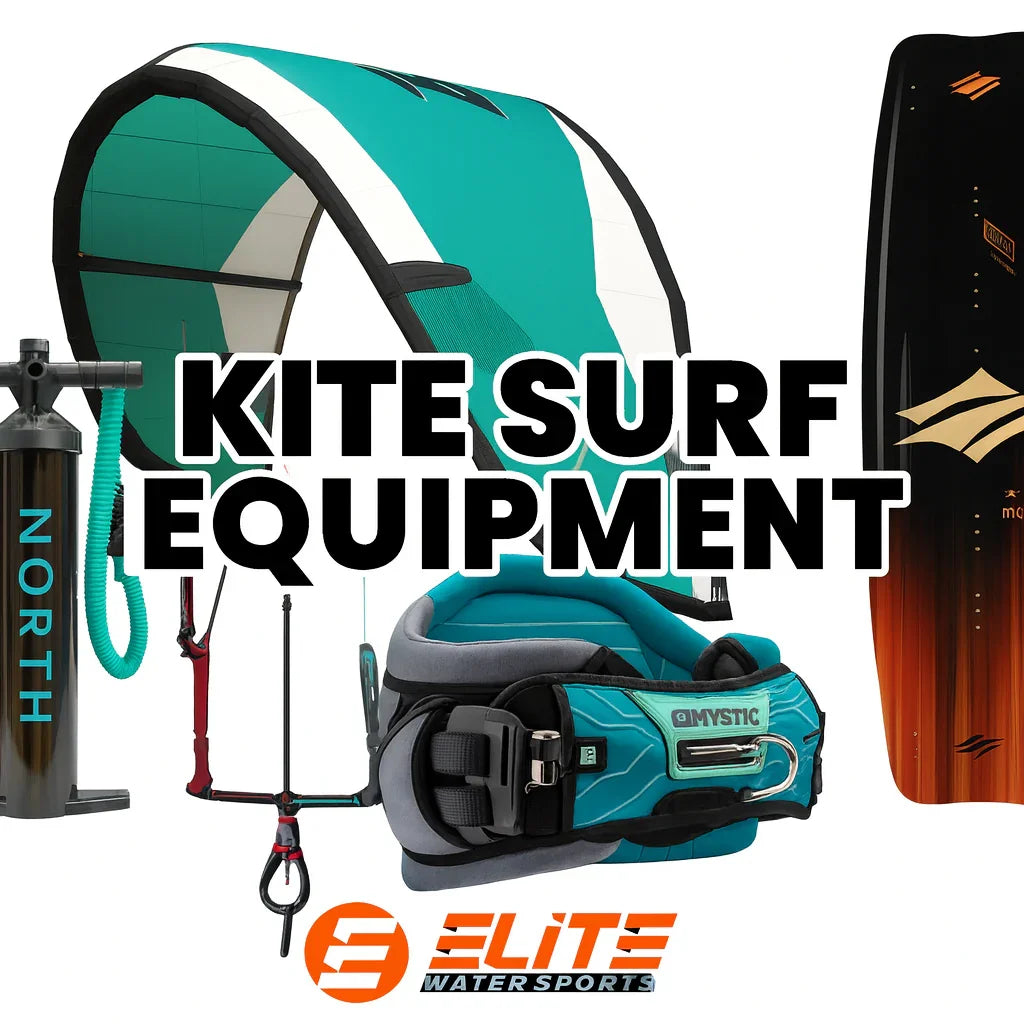ELITE WATERSPORTS
Last updated 12-09-2024
A guide to set up your kiteboard
Everything you need to know.

A beginners guide to kiteboard setup.
Setting up your twin tip kiteboard properly can transform every moment on the water. A few thoughtful adjustments improve edge control, reduce fatigue, and give you the confidence to focus on refining your technique.
instead of wrestling with unpredictable gear, you’ll direct your energy toward learning and having fun.
This guide outlines the key steps to customizing your kiteboard for your height, style, and typical conditions.
You’ll learn how to select the right stance width, angle your bindings properly, and find the sweet spot for foot-pad placement.
We’ll also dive into fin selection and provide practical tips for tightening screws so you spend more time riding and less time tinkering.
Along the way, we’ll share methods for identifying your board to ensure it’s returned if it ever slips out of sight at a busy beach.
Each detail, from board markings to screw security, serves a purpose: to improve your peace of mind and help you maintain a consistent setup for progression. With these insights, you’ll know your board inside and out.
Whether you’re a first-time kiteboarder or have years of experience, the knowledge in these pages will deepen your understanding of gear tuning. By the end, you’ll be ready to hit the water and a master of your own set up.




Table Of Content
- How to set up your kiteboard twintip.
- How to choose the best kiteboard foot placment?
- What's the best stance for my kiteboard?
- Should I adjust my kite foot pads for heel or toeside?
- Whats the best kiteboarding fin size?
- How do I find a lost kiteboard?
How to set up your kiteboard twintip
Performance: Setting up your twin tip kiteboard correctly can dramatically enhance your riding experience. Choosing the ideal stance width, duck angle, foot-pad placement, and fin configuration means you get the maximum performance out of your kiteboard, tailored to your weight, riding style, and typical conditions.
Taking a bit of time to fine-tune your setup will deliver better upwind capability, smoother transitions, and more comfortable landings.

How to Choose the Correct Foot-Pad Placement on a Kiteboard?
How do I put on my kite foot straps?
Foot-Pad Placement: Your foot-pad and strap placement is critical. At Elite Watersports, the standard approach is a “medium” setup right out of the box.
This involves setting the straps at a moderate duck angle and placing them in a middle position that’s not too far forward or back, nor too heavily weighted toward either the heel side or toe side of the board.
By starting at this neutral position, you can easily refine your setup over time.
Short riders: For riders on the shorter side (around 5 feet to 5’5”), short: bringing the straps slightly closer to the center helps maintain control and comfort.
Tall Riders: Conversely, taller riders often benefit from moving the straps wide: closer to the outside inserts, giving a broader stance and allowing more leverage on the board’s edges.
Whats the best stance for my kiteboard?
What Is the Best Stance Width and Duck Angle for My Kiteboard?
Duck Angle: Your stance “duck” angle refers to how much your feet point outward. Finding the sweet spot is key. Too square, and you’ll twist your knees awkwardly when pointing your toes toward your direction of travel. Too ducked out, and reversing direction puts strain on your inner knees. Aim for a moderate angle that allows your feet to rotate comfortably inside the straps. This flexibility is why foot straps are wider than your actual foot—so you can shift your toes out when riding in either direction.
Stance Width: Adjusting your stance width is similar to choosing the right bicycle seat height: it should feel natural.
Balance: If you bring the straps closer together, you’ll find it easier to shift weight and apply pressure to different edges, which can be helpful for certain tricks or quick maneuvers. Widening the stance can give you more leverage for powered-up riding but may require more muscle input to control the board’s tips.
Pro tip: While standing, jump up and land into a semi-squat. Do this a few times. Where are your feet when you land? Is it comfortable on your knees? This is a good way to refine the stance.


Should I Adjust My Foot Pads for Heel-Side or Toe-Side Bias?
Heel-Side Favoring: Many kiteboarders ride primarily on their heel side. If this sounds like you, you may want to shift your straps slightly toward the heel side.
Comfort: Doing so gives you more direct pressure on that edge, improving upwind performance. But be aware, pushing straps too far heel-side can cause spray to hit you in the face, which indicates it’s time to move them back toward center.
Toe-Side Adjustments: If you frequently ride toe side or are exploring transitions and carving, consider a more centered placement.
Fatigue: Shifting straps too close to the toe side can cause unnecessary shin fatigue.
Keep it balanced! A balanced, middle-ground placement avoids these issues and provides versatility for various riding styles.
Whats the best kiteboarding fin size?
How to Choose the Right Fin Size for Different Conditions?
Fins: Fins are often predetermined by the board’s manufacturer. A standard board might come with 48 mm fins that perfectly match its size and flex characteristics.
Adaptation: If you ride in consistently flat water, smaller fins (e.g., 20–30 mm) can make the board feel looser and more playful. For choppy conditions or big-air sessions, going back to the standard (or slightly larger) fins will give you more grip and control.
Versatility: Many riders keep two sets of fins on hand. Conditions: One set for playful, flat-water freestyle sessions and another for big air or choppy conditions. Larger fins give you more “bite” in turbulent water, while smaller fins let you slide, spin, and release the board easily during tricks.
What about no fins? This is a great training technique to improve edge control. Everyone should try it at least once to see what fins actually do.


How Do I Properly Install kiteboard Fins Without Losing Screws?
Installation: When attaching fins, start by threading one screw lightly, letting the fin hang in place. This makes it easier to line up the second screw without fumbling.
No power tools: Consider using hand tools instead of power drills for the first installation, ensuring that screws thread correctly and inserts remain intact. Once you’re comfortable with the setup, a power tool can speed things up later.
Loctite: A top trick from industry veterans is applying blue Loctite to all your screws (not the red version).
Security: This keeps screws from vibrating loose over time, saving you from the hassle of mid-session adjustments or the risk of losing a fin entirely.
How Can I Prevent Losing Screws on the Foot Pads? Just like your fins, use a little blue Loctite on the foot-strap screws. This ensures your foot pads stay locked in place, maintaining the exact stance and duck angle you’ve painstakingly dialed in. Without it, repetitive sessions may loosen them, forcing you to re-tighten every few rides. Loctite helps you maintain consistent performance over months of heavy use.
How do I find a lost kiteboard?
How Do I Mark My Kiteboard to Recover It If Lost?
Identification: Leaving your name and contact information in a visible area on your board can be a lifesaver if you forget it at the beach or if it drifts away.
Visibility: Many community-oriented spots have honest riders who will call if they find your gear.
Hidden Marking: Worried about opportunists removing your visible info before selling your board?
Proof: Hide another set of details under your foot pads or straps. Few people will take the time to remove them and check. If you ever need to prove ownership—say you’ve found your board listed online—you can provide these hidden details to local authorities. In many places, this hidden marking can stand as solid evidence of your rightful ownership.


How to Prove Ownership of a Kiteboard If It’s Stolen?
Evidence: In a perfect world, you’d prove ownership by referencing a board’s serial number matched to your purchase receipt.
Reality: Most kite shops don’t track serial numbers. That’s why your hidden markings under the straps are crucial.
Verification: If needed, you can show the unique details hidden on the board to law enforcement, making it near-impossible for someone else to claim it as theirs.
Final thoughts and FAQ
Refinement: Achieving the perfect twin tip setup isn’t a one-and-done process. Start with a neutral stance, moderate duck angle, and standard fins.
Adjust: Over time, fine-tune based on comfort, knee strain, spray in your face, or the ease of riding toe side. Tinker with fins for different conditions and secure your screws with Loctite to maintain consistency.
Mark your board to protect your investment. With patience and small adjustments, you’ll have a configuration that perfectly suits your unique style and riding conditions.
Frequently Asked Questions
How do I find the right stance width for my kiteboard?
Finding the ideal stance width involves starting in a medium, neutral position. Experiment by moving the straps inward for shorter riders and outward for taller ones. Adjust in small increments until you feel balanced and can easily transfer weight between your front and back foot.
Do I need special tools to adjust my kiteboard fins?
A standard screwdriver is usually enough for fin adjustments. Hand-tightening your screws ensures proper alignment, especially the first time you set up your board. If you prefer power tools, wait until everything fits well before using them, and always use caution to avoid stripping the threads.
Can I use foot straps from one brand on another brand’s board? In many cases, foot straps and inserts are brand-specific, providing a wide range of adjustments when used with the same manufacturer’s board. Mixing brands can limit your adjustment options and may not fit perfectly. Check compatibility guidelines or consult your local kite shop for advice before mixing and matching gear.
How often should I tighten my kiteboard screws? Ideally, you want to prevent screws from coming loose at all. Applying blue Loctite keeps your foot-pad and fin screws secure over multiple sessions. Once properly set, you shouldn’t need to retighten regularly.
Periodic checks, however, are always wise, especially after heavy riding conditions or travel.
How do I find my lost kiteboard? Without a trackable serial number, hiding your personal details (like your name or initials) beneath the foot straps is a smart move. This concealed information helps prove ownership in case of disputes. Document the hidden spot with a photo and keep your purchase receipt to strengthen your claim.
Why Elite Watersports?
The expert team at Elite Watersports is here to serve. If you have any kiteboarding related questions call us. We can build custom kiteboarding packages, book kiteboarding lessons or simply offer helpful advice. We're your one stop shop for kiteboarding knowledge.
Swing by the shop and say hello!
If you need help deciding on your first kiteboarding kite give Elite Watersports a call. We're happy to set you up with your first kiteboarding kite.
(727)-800-2202
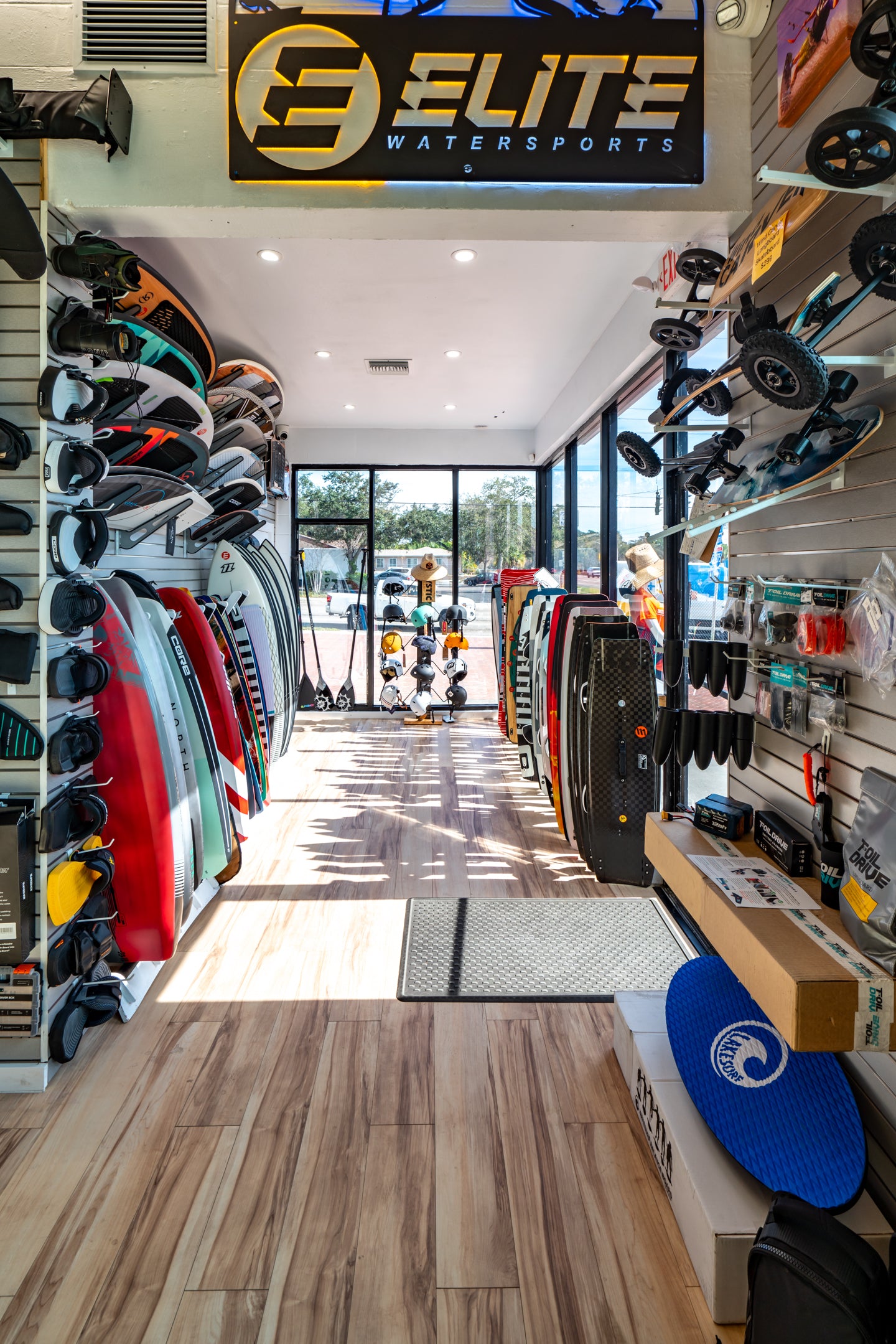
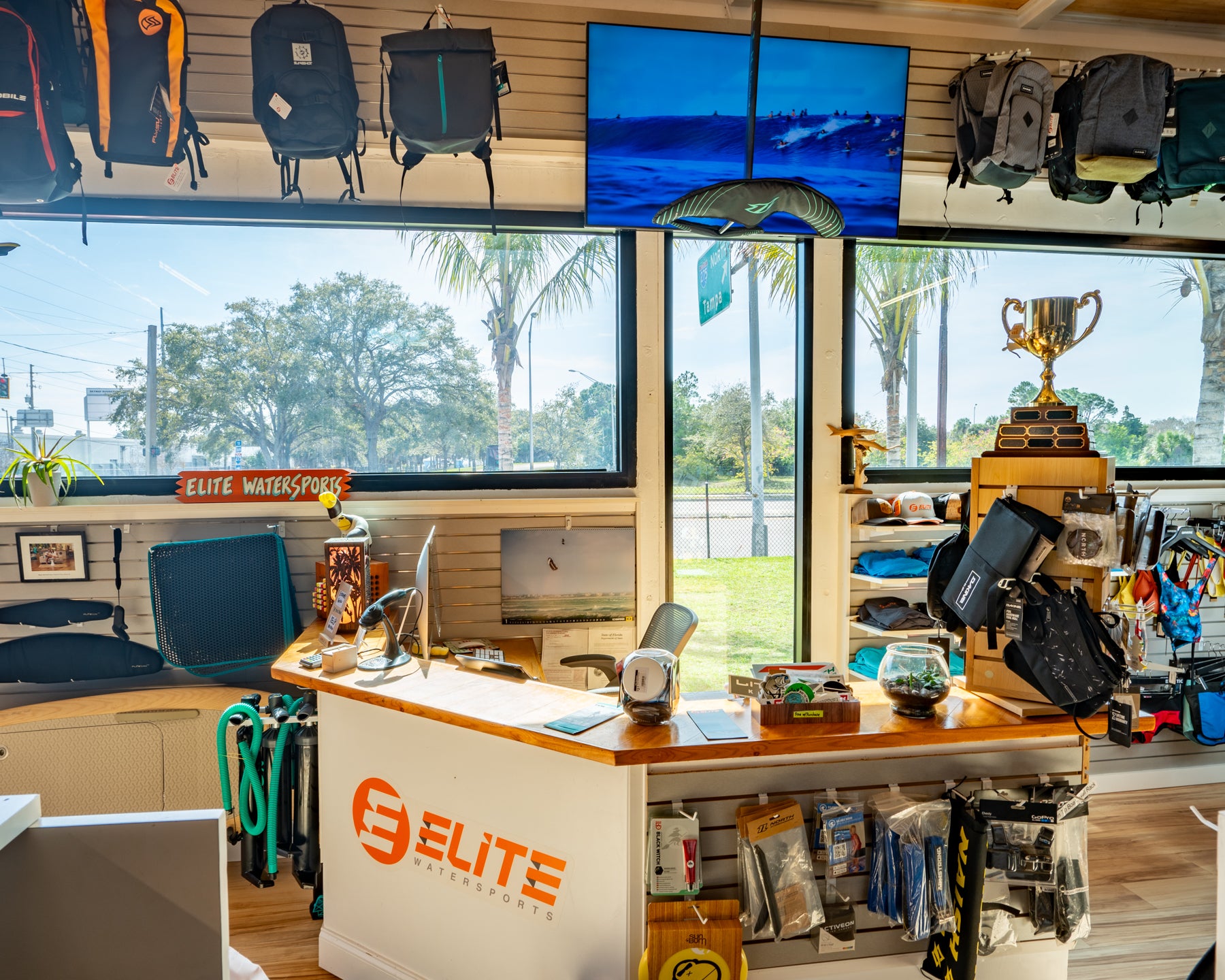
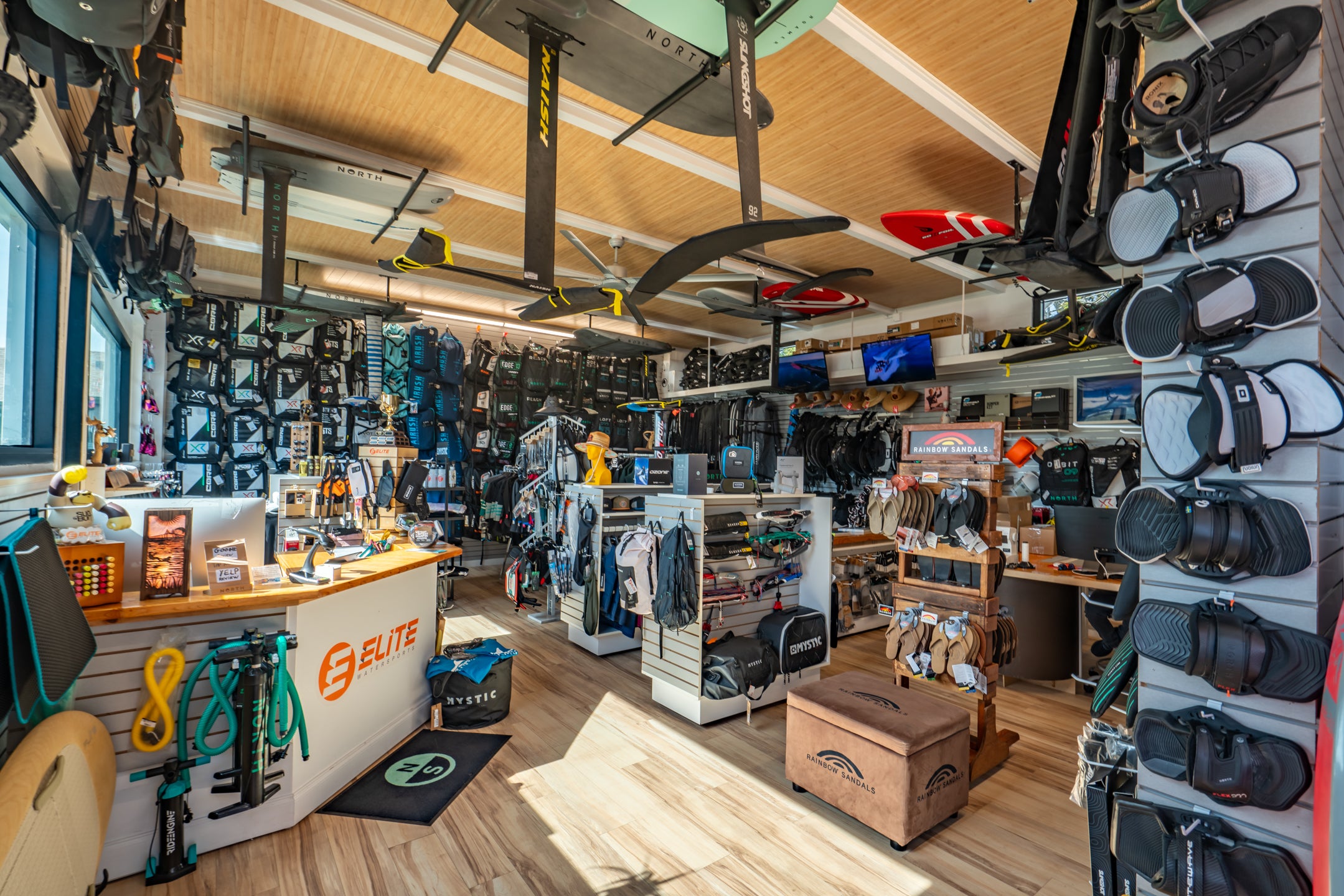
Author

Ryan "Rygo" Goloversic
Tags
Kiteboarding
You May Also Like
Want To learn more about kiteboarding?
Follow us to receive the latest update on our journey experience

